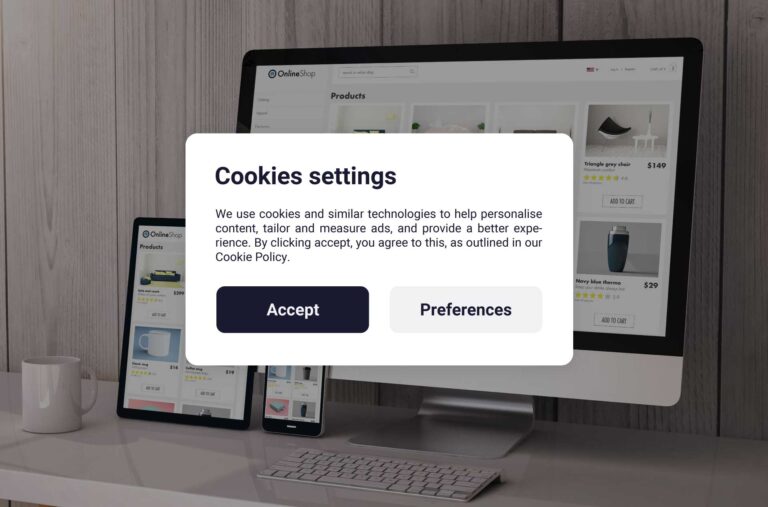Personalization in the apparel & fashion space is highly sought-after.
It gives companies a competitive edge to stand out against the sea of other brands with that personal touch.
However, implementing may be easier said than done.
Apparel brands that hope to implement personalization in their customer experience and business operations have some key challenges to face.
But first, let’s focus on why the fashion and apparel category is uniquely challenging.
Challenges for DTC Apparel brands
Running apparel and fashion brands takes a lot of work. It’s considered one of the most challenging categories to be successful in when running a (DTC) business.
Here are some of the reasons why:
Firstly, the fashion industry is highly competitive and extremely crowded.
Many established brands occupy the market, making it tough for a new brand to stand out and get traction.
While social media, video ads, and audience targeting have enabled far easier entry into the space, the neverending stream of new entrants vying for market share makes it challenging to differentiate and grab shoppers’ limited attention.
It makes sense as the #1 eCommerce industry, valued at $775 billion and projected growth to over $1.2T by 2025. (That’s 29.5% of online DTC sales.)
Differentiation in branding and authenticity has helped fashion merchants stand out, similarly with personalizing shopping experiences.
Secondly, the fashion industry is highly trend-driven. And trends change quickly.
Apparel brands must adapt quickly or find a niche that might not stay hot.
The number of styles is as diverse as stars in the sky, so while there’s space to innovate, the styles don’t always land with your audience.
Plus, shopper loyalty is fickle as the wind, another reason for investing in personalization.
Thirdly, the apparel, by its nature, is entirely dependent on fit and sizing.
This means very high return rates and, unfortunately, easily earned customer dissatisfaction.
It also requires reviews to convince shoppers that the fit/size is true.
Fourthly, and similarly, apparel and fashion products are often high-touch and require customers to physically try them on before making a purchase.
The look and feel of styles are very nuanced.
For online stores, the photography and models all tie deeply into the perception and evaluation before making a purchase.
It’s not just features – it’s the “feel”. Apparel ultimately reflects someone’s identity.
Lastly, apparel typically requires a significant investment in inventory – which means more complex supply chain management.
The logistics around returns only complicate this.
Plus, sourcing materials ethically and sustainably is often as important in shopping decisions as anything else these days.
Apparel and fashion data is chaos
Apparel data for eCommerce is complex. Unwieldy.
Beyond the standard data chaos that is generated from website visitors, orders, ads, campaigns, products, and the suite of analytics tools… apparel struggles with additional factors.
Every time one of your shoppers’ orders – you collect data. But apparel return rates are so high, whether they keep versus return it is super critical data.
Why was it returned? Size, style, color? Even more insights.
This is just the tip of the iceberg.
Given the massive variation in styles, designs, fits, sizes, colors, and collections, the data ends up being more complex than other DTC categories.
And the reality is that a consumer’s shape & body size, style & preferences, or geographical location can change, which changes their apparel needs… meaning all that data can go stale.
It may take a lot more manufacturing horsepower to build DJ equipment – but the consumer-facing-complexities are orders of magnitude larger in clothing and accessories styles.
Plus, not everyone wants to be a DJ – but pretty much everyone wears clothing.
But all that data is critical: “Personalization technologies are usually fueled by massive amounts of data about shoppers … and data about their behavior before start predicting what they will like.” (Gulanz Khusainova, Forbes)
So how can apparel brands possibly apply personalization to such a diverse space?
Personalizing the fashion experience
Personalization creates expectations for customers that they’ll receive highly tailored recommendations and a personalized experience.
However, brands must balance this with the realities of what is possible – especially given the chaotic nature of their data and the available technology.
Personalization should enhance the shopping experience. Of course.
It should provide relevant and useful recommendations, remember user preferences and history, and more.
But apparel merchants must ensure that implementing personalized experiences does not accidentally detract from the user experience.
Here are three examples::
- This could happen if the systems created cluttered user interfaces on the web, app, or email.
- It could also create confusion with an overly complex recommendation system.
- If the technology infrastructure or integrations aren’t strong, your site could load slowly, images may not render, and the algorithms may simply be too broad to be personalized.
- Finally, personalization is only as good as the data that feeds the engine. Without good data tools and practices, efforts may fail you when you recommend the wrong products.
Businesses that can build personalized touchpoints will add value to their brand and build long-term customer loyalty.
Building the experience
One-to-one personalization for DTC apparel is the holy grail.
But how do you build it?
There are many flavors of tools out there.
- Some give marketers and merchandisers the ability to build and design tests, segments, rules, and web flows for shoppers.
- Others run on auto-pilot, with a self-learning optimization engine.
- And still, others hyper-focus on small sub-sections of the customer experience.
In any case, artificial intelligence (AI) is now inextricably involved in personalization.
As mentioned, AI needs good data, good integrations, and good technology infrastructure to accurately personalize a given experience to the corresponding person.
Companies must invest in developing user experiences that provide a seamless and personalized journey for each individual customer.
How does good apparel personalization look
Data
For every customer interaction with your brand, that shopper’s profile should be enriched with new data.
The underlying personalization engine is fed with data about the correlations between actions, campaigns, styles, attributes, and shopper personas.
This improves the model accuracy for personalized fashion recommendations.
AI and ML
Central to any personalization system are AI and machine learning (ML).
Different models work for different sub-categories. It may be that the underlying models that personalize high fashion very accurately don’t work for small-brand underwear and intimates.
Infrastructure – we like to call it – makes a difference. Your toolset should equip the right set or test multiple types of models to select what is best.
Automation
Most apparel brands have too much to worry about with branding, copy, photo editing, creative, and driving traffic in a competitive advertising space.
Personalization shouldn’t be another task. It should run on auto-pilot.
This means your tools are intelligent, automated and don’t require much hands-on work from your team.
Goals: Sales & CSAT
The personalization that your apparel brand puts in place should focus on maximizing your goals.
First: more conversions into more sales. And with bigger cart sizes and higher average order values (AOV).
Second: higher customer engagement and customer satisfaction (CSAT)
Conclusion
A Forbes article highlights the value of personalization for fashion shoppers.
“A big advantage of personalization is that it helps shoppers navigate overwhelming e-commerce offerings and get to the purchase decision faster. Who wouldn’t prefer to go to an online shop and immediately find exactly what they need…?
But it is not just about making quick decisions. It can be critical for a business to help shoppers overcome “analysis paralysis”, a phenomenon where too many options leave one unable to make any decision.” (Forbes)
It’s a huge differentiator for apparel brands to deploy personalization the right way.
There are some big challenges for apparel and fashion brands. Some will perennially persist.
But despite some of the tough circumstances, it’s an exciting and engaging industry that will always have room for more daring brands to claim market share.
Launching predictive personalization on your fashion site should be a no-brainer. It should be easy to get the right tooling to quickly and easily get set up and start making more money automatically.
Aidaptive is a personalization engine that provides eCommerce AI to brands big and small. Tools like Aidaptive (Shopify App) will help you turn more shoppers into customers, more customers into repeat buyers, and get better ROAS – automatically.
Explore the impact of personalization on your store using this ROI Calculator.


